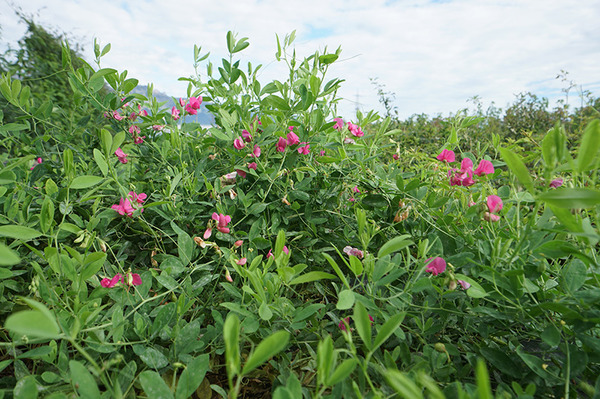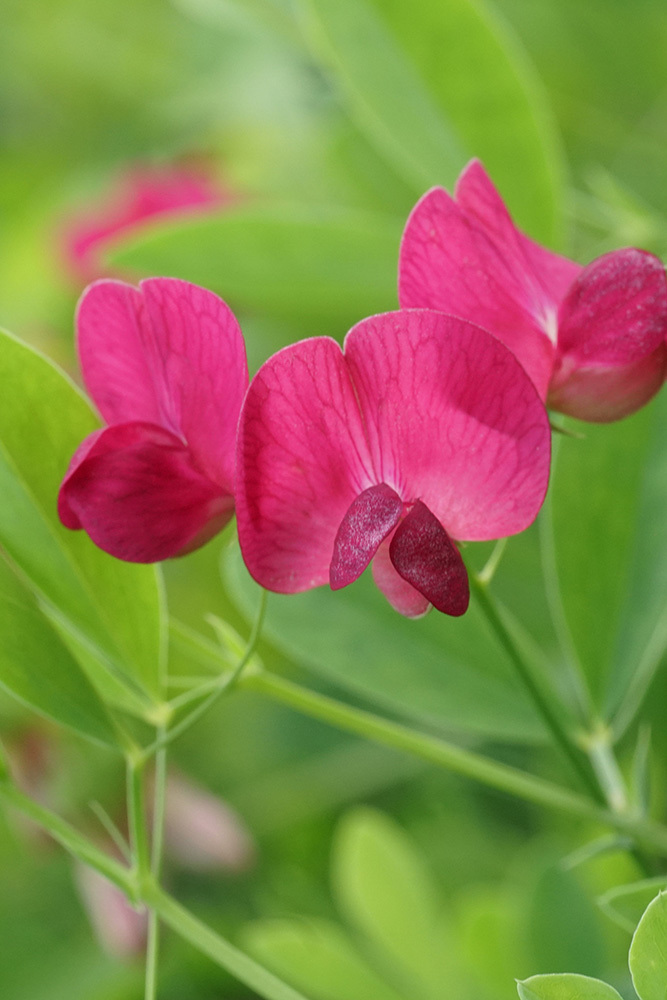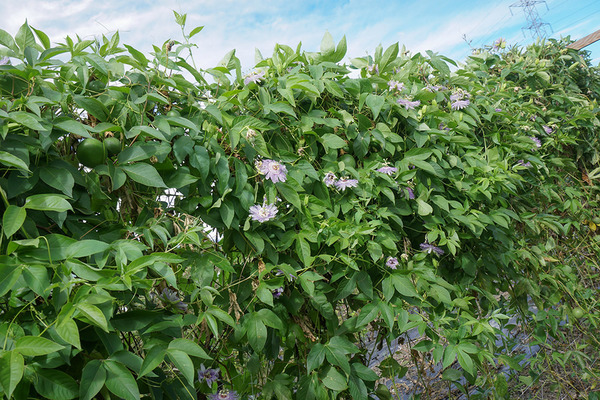 In this short interview by Frederik Vollert, Lubera® breeder Raphael Maier talks about the latest developments, focal points and highlights in breeding, which mainly takes place in Buchs in the Swiss Rhine Valley.
In this short interview by Frederik Vollert, Lubera® breeder Raphael Maier talks about the latest developments, focal points and highlights in breeding, which mainly takes place in Buchs in the Swiss Rhine Valley.
Raphael Maier, what are the craziest breeding projects at Lubera® at the moment?
Well, of course I have the feeling that they are all a bit crazy. Probably the hardy passion fruits are already very extreme! Who would think of trying to establish the epitome of tropical fruit in cold Central Europe?! Whereas the domestication of the native tuberous pea (Lathyrus tuberosus) is also pretty bizarre. We are trying to establish this tuberous legume, which was already cultivated on a small scale in Europe in the past, as an alternative to the potato.


Pictures: Lathyrus tuberosus – the tuberous pea – the entire bush and a close-up of the flower.
That sounds exciting. But if it is native, why wasn't the tuberous pea grown earlier instead of the South American potato?
That is a good question! Like I said, the tuberous pea was already grown on a small scale in Europe 300 years ago. Unfortunately, however, it did not stand a chance against the potato. The tuberous pea takes a relatively long time to grow its rather small tubers, which are about the size of a walnut. The potato, on the other hand, can produce kilos of tubers within four to five months. But this is also due to the fact that the potato was already cultivated almost 8,000 years ago and thus has a head start.
So why domesticate a new plant at all when we already have the potato?
Although the potato is (for the moment) clearly ahead in terms of yield, Lathyrus tuberosus also has advantages. On the one hand, the plant is extremely tolerant of drought and poor soils, and on the other hand, it binds nitrogen, which only very few crops can do. And with a little breeding, we can probably improve yields and tuber size significantly.
What is the time frame in a breeding programme? Do you get a new variety in a year?
That would be great! In reality, breeding takes a lot of time. From the start of a breeding programme to the market launch of the first variety, it usually takes 5 to 15 years, depending on the species. Of course, we try to shorten the time here, too. For example, hopefully soon by using climate containers in which we can continue breeding during the winter. However, time is always a factor.
How many compromises do you have to make when you want to launch a new variety?
As a breeder, you always dream of the perfect plant. Every year you hope against your best knowledge that you have won the genetic lottery and will find the ideal variety in the breeding field. Unfortunately, this is usually not the case. While we do improve our gene pool significantly with each plant generation, you can never actually tick off all of the items on your wish list. Especially when domesticating wild plants, you have to make a lot of adjustments and that is rarely possible at the same time. For example, in the case of Lathyrus tuberosus: we aim for large tubers, disease resistance, a smooth tuber surface, compact growth, etc. Reality often puts the ambitious ideas into perspective all by itself. We have great new varieties every year, but we always have to make compromises which we have to accept as realistic breeders.
You also mentioned passion fruit. Isn't winter hardiness a problem with exotic passion flowers?
I work mainly with the North American species Passiflora incarnata. Here, absolute winter hardiness is not a problem. The plant can tolerate -20°C without batting an eyelid. A much bigger problem is that it is adapted to a continental climate. It can survive cold winters, but then needs long, hot summers. In cool Central Europe, this then leads to late new shoots in the spring, a late start to flowering and, in the end, the fruits no longer ripen. That is why I mainly select early plants: early budding, early flowering and fruit ripening.

Picture: Passiflora incarnata in its second year of growth.
A common thread running through your projects is the unusual, or rather the extraordinary. What was the most unusual suggestion you could bring to the Lubera® breeding programmes?
For me, the great thing about breeding is that you can create something new and unprecedented, like an artist. In my case, new and delicious edible plant varieties. One very unusual project that I still find extremely exciting is new raspberry-blackberry hybrids! Our aim is to create raspberries with the fruit structure like a blackberry (i.e. without a hole in the middle). There are already Rubus hybrids like the loganberry or the tayberry. However, these are 50 to 120 years old. Today, thanks to great new raspberry and blackberry varieties, we can produce such hybrids with much more potential. Just this week we were allowed to make the first crosses for this. I am already extremely excited to see what will come out of it!
Imagine an extremely delicious hybrid between a raspberry and a blackberry. Thornless plants that flower and bear fruit on this year's new shoots and grow upright. I would definitely plant a berry like that in my garden...
Was there also a breeding project proposed to you that was too unusual even for Lubera?
Winter hardy cactus fruits! That went a bit too far. I still think it's a great idea, but I can understand the decision. The great American plant breeder Luther Burbank almost went bankrupt with his prickly pear breeding. And that is something we would rather avoid at Lubera.
Raphael Maier, thank you very much for this exciting insight into the Lubera® breeding programmes.
